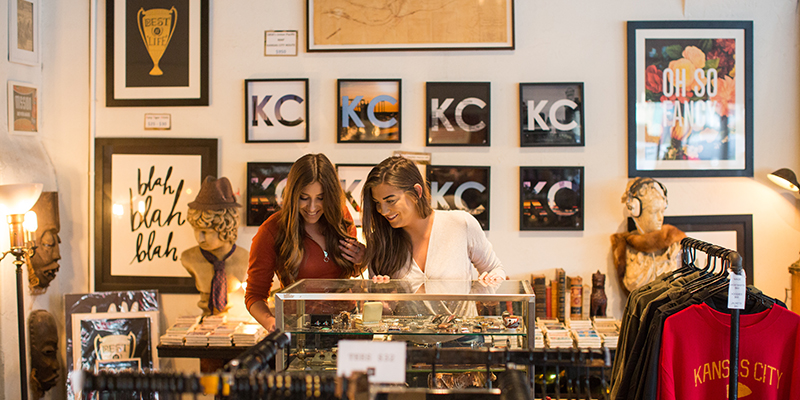BLOG
Kansas City’s Rich Fashion History

By Kathryn Greene
New York City and Paris immediately come to mind as the center of the fashion universe, but Kansas City once orbited nearby. In fact, after World War I, Kansas City was second only to New York City in output due to label Nelly Don—a maker of women’s ready-to-wear dresses—and the city winning multiple manufacturing contracts for military uniforms during World War II.
It’s even estimated that at one point in time, one in seven American women purchased a garment that had been designed and manufactured in Kansas City. But when it comes to the retelling of fashion history, Kansas City’s story remains largely unappreciated outside of Missouri and the greater Midwest.
Discover the rich history behind KC’s fashion industry:
Piecing Together the Past
In 1919, fashion designer Nell Donnelly Reed founded the Donnelly Garment Company. She saw success by designing dresses for a then-unexplored niche: a cross between casual and upscale ready-to-wear. As a size 16 herself, she was inclusive in the sizing of her dresses, which also gave her an edge over the competition.
As a designer, Reed pioneered one of the biggest advances in manufacturing still used by companies around the world to this day. The entrepreneur is credited with the popularization of piece work, which assigned seamstresses to construct one piece of a garment before passing it on, maximizing efficiency and utilizing the entire team’s strongest skills.
Between the flattering fit of her designs and revolutionary manufacturing system, the Donnelly Garment Company went on to make and sell 75 million dresses between 1916 and 1978, sealing its legacy as the largest dress manufacturer of the 20th century.
The Decline

So, what happened? Kansas City’s fashion industry went from one of the most successful of the 20th century to a steep, mid-century decline. Several factors are to blame, with many converging around the same time.
After the 1950s, local Kansas City shops were severely impacted by chains retailers, as well as work beginning to be outsourced overseas. The rise of malls in the 1970s and 1980s also prompted a drop in catalog sales, which hurt local shops and manufacturers.
Modern Resurgence

Today’s Garment District is bound between Ermine Case Junior Park to the west, Wyandotte Street to the east and between West 9th and West 6th Street. While a lot of the once-bustling area has been redeveloped into other businesses, some of it remains intact. Know where to look and pieces of the past can be found Downtown.
Iconic Kansas City Department Store Harzfeld’s, which closed in 1984, still maintains a presence, albeit in name only. Its logo and metal awning still exist at its one-time location, 1111 Main St., now home to Town Pavilion, an office complex.
Just down the street, “The Needle” on Broadway and West 8th St. in a small park named Garment District Place pays tribute to the past. The sartorially inspired sculpture (by artist Dave Stevens) depicts a needle looping through a red button. Steps away, the Historic Garment District Museum displays vintage clothing and equipment from the Garment District’s heyday.
But Kansas City’s fashion history isn’t intended to be a relic; many designers and organizations are working today to write the next chapter. Collectives like Kansas City Fashion Week and West 18th Street Fashion Show showcase the work of local designers annually. Non-profit Rightfully Sewn has a mission to once again make Kansas City a fashion hub by providing seamstress training for women.
Although Kansas City may no longer be one of the top clothing manufacturers in the United States, it is incredibly supportive of local designers, from the colorful socks by Sock 101 to the instantly recognizable Charlie Hustle T-shirts that Kansas Citians wear with pride.

Handcrafted items are flourishing, with leather goods becoming a large part of the market. Baseball-inspired leather accessories and clothing line Sandlot Goods manufactures everything from wallets and handbags to the ubiquitous “Made in KC” tees seen around town. Meanwhile, designer Emily Bordner creates minimalist clutches and other small accessories.
Not far from the Garment District, Houndstooth makes bespoke and ready-to-wear suits. The shop is a modern incarnation of Rick’s Tailoring and Menswear, which served customers from 1978 to 2014.
Though no longer centralized in one neighborhood, the steady growth of shops, designers and manufacturers makes it clear that Kansas City is poised for a fashionable comeback—one that might be well under way.


